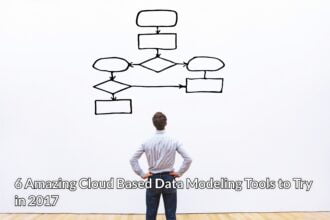The Preditioneer’s Game: Using the Logic of Brazen Self-Interest to See and Shape the Future by Bruce Bueno de Mesquita makes a pretty strong case for using models to make critical decisions, whether in business or international policy. To anyone involved in prediction science, Bueno de Mesquita’s claim of 90% accuracy (“According to a declassified CIA assessment…”) might seem an exaggeration. But the author has
The Preditioneer’s Game: Using the Logic of Brazen Self-Interest to See and Shape the Future by Bruce Bueno de Mesquita makes a pretty strong case for using models to make critical decisions, whether in business or international policy. To anyone involved in prediction science, Bueno de Mesquita’s claim of 90% accuracy (“According to a declassified CIA assessment…”) might seem an exaggeration. But the author has two things in his favor. He limits his efforts at prediction to a specific type of problem, and he’s predicting outcomes for which there is usually a limited set of possibilities (for example, whether or not a bank will issue a fraudulent financial report in a given year).
Perhaps because he has a consulting business devoted to applying his ideas, Bueno de Mesquita provides only a few details of his method. We learn that it’s based on game theory in general and John Nash’s contribution to solving games, and that the method requires measuring or estimating the self-interest of each of the players. Even without the underlying mechanics, we get a sense of the potential of his approach in compelling accounts of application of the model to problems of CEO succession, negotiating with North Korea, plea bargaining, the Israeli-Palestinian conflict, and the near future of Iraqi politics in the aftermath of US troop withdrawals.
One of the best things about this book is what it teaches us about developing and using predictive models. One chapter is devoted to a kind of validity analysis in which Bueno de Mesquita revisits a few important historical events and lets his model loose on them. Keeping in mind that an important element of game theory involves inferences about the intentions of others, his model suggests that if Great Britain had signaled its commitment to Serbia in the summer of 1914–perhaps by sending a warship or two into the Adriatic–WWI as we know it might have been avoided, with Austria-Germany accepting less than the surrender of Serbian sovereignty. In another chapter, writing about the failure of the Clinton administration to bring about healthcare reform, the model is thrown off by an “external shock,” leading Bueno de Mesquita to the realization that he may need to allow for the impact of random or unanticipated events. In this specific case, the predicted outcome was dependent on the influential role of Daniel Rostenkowski, the Democratic congressman from Illinois and chairman of the House Ways and Means Committee. Unfortunately for the Clinton healthcare plan, Rostenkowski was indicted for corruption, throwing a big, big wrench into the works. The model had been based on the assumption that all of the key players/elements would be constant over the course of congressional bargaining for the legislation. There was no mechanism for taking this “random shock” into account.
Bueno de Mesquita is not afraid to stick his neck out. Towards the end of the book he applies his method to predicting the course that Iraq will follow after US troups are withdrawn. In particular, he compares a complete withdrawal to a draw down with about 50,000 US troups remaining in Iraq. In particular, he is interested in whether or not Iraq moves closer to Iran. Given that we now have committed to keeping about 30,000 troops (not a condition that was tested, or at least not reported), it will be interesting to see how things play out.
As much as I enjoyed reading this book, I’m not sure how to apply this approach to the typical problems we encounter in marketing. Game theory has been applied to price competition (and perhaps other interactions between suppliers) but not (or not often) to the interaction between sellers and consumers. There’s no question that naked self-interest plays a role in these interactions. However, most consumer purchases don’t involve much negotiation. For those that do–Bueno do Mesquita offers his proven method for getting the lowest possible price on a new car. Be sure to check out the first chapter if you’re in the market for a new automobile!
Copyright 2010 by David G. Bakken. All rights reserved.






